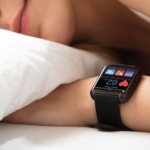Because of design decisions that limit the healthcare-readiness of Glass out-of-the-box, successful implementations of Glass in healthcare settings have relied on tight collaboration between health systems and technology companies. For example, preliminary results of clinical pilots by EHR vendor Augmedix have been promising, with good patient feedback and increased direct patient contact observed at a pilot in Ventura Medical Clinic.6

Possible Uses in Rheumatology
There are several use cases for Glass that may be useful for a rheumatologist in improving workflow and possibly patient care. First, Glass can aid with information retrieval and synthesis if linked to the EHR. Although Glass does not have a keyboard for input, the combination of touch controls and speech recognition allows for quick retrieval of summary screens and disease work-ups. For example, a rheumatologist evaluating a patient with an unclear autoimmune syndrome while wearing Glass could ask a Glass-based EHR to “pull up the serologic work-up,” which would be translated by the device into a request for relevant antibodies from a patient’s medical chart, showing results on the Glass display. This concept of targeted querying already exists in the Brigham and Women’s Hospital, Boston, Mass.
The Glass EHR prototype application—and its key benefit (in theory) over the traditional desktop EHR—is that it allows physicians continuous access to the medical record while examining the patient and when moving about between clinic and hospital rooms.7 Wearing the EHR untethers the physician from the desktop computer, allowing the patient and the examining table to serve as the focal point of the doctor’s attention. Linking the Glass device to radio frequency patient identification tags further creates the possibility of having Glass automatically display patient summary information when the physician wearing it walks into a patient’s room.
Glass could also be used as a conduit for clinical decision support truly delivered at the point of care.
Teaching Clinical Skills
Glass also has the potential to improve the transfer of knowledge to medical students, especially regarding practical procedures in medical education. An educator can teach in real time by streaming what he or she is seeing projected on a large screen or a computer so that students can get an insight into what the teacher is seeing while they are speaking.
Another example is having a patient wearing Glass so the students can view themselves through the patients’ eyes, thereby experiencing patient care from the patients’ perspective to better understand what it means to be a patient.
